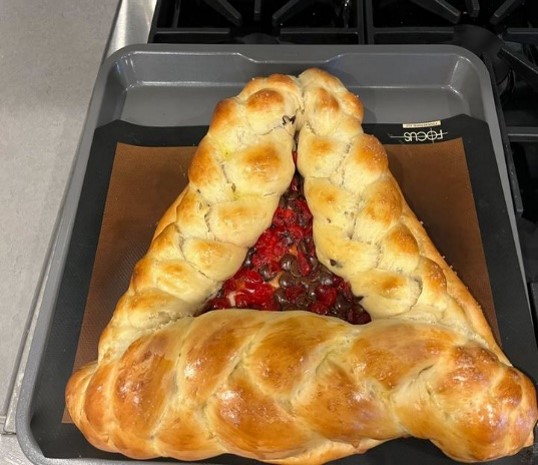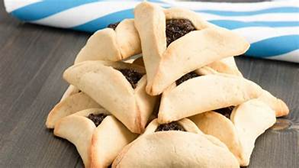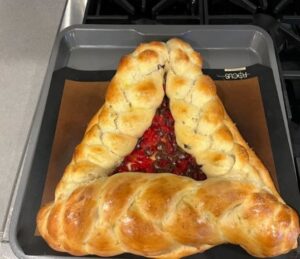
Jewish Holiday
Poppy Seed, Prune or Something Else: Some History of Hamantaschen
Poppy Seed, Prune or Something Else: Some History of Hamantaschen
Created by Rabbi Shari Shamah, Jewish Life Specialist
- Hamantaschen are called Oznei Haman (אוזני המן) in Hebrew
- Origins of the Purim treat:
- They are triangular shaped to be reminiscent of Haman’s Pockets, Haman’s hat, or Haman’s ears.
- The triangular shape (3 corners) is also said to represent the patriarchs – Abraham, Isaac, and Jacob. Which is taken to signify the faith that the Jews showed, and which weakened Haman’s resolve.
- Oznei Haman – “Early versions of the cookies were more commonly known as oznei Haman, meaning “Haman’s ears.” The late Jewish food historian Gil Marks’ Encyclopedia of Jewish Foodtraces that phrase — but not the cookie — to the Roman scholar and poet Immanuel ben Solomon (c.1261-1328) who, thanks to “a misinterpretation arising from the medieval Italian custom of cutting off a criminal’s ear before execution,” argued that Haman’s ears had been cut off after he was hanged, at the end of the Purim story.” https://time.com/4695901/purim-history-hamantaschen/
- Which came first, the cookie, or the connection to Purim?
- What about the filling?
- The poppy seed filling often found in Hamantaschen could be a link to beans and seeds mentioned in the context of Queen Esther.
- During the 3 days she fasted before seeing the King and revealing her Judaism, Esther, to keep Kosher, only ate beans and seeds. Similarly, the Prophet Daniel only ate beans to avoid being fed non-Kosher food.


(Shameless plug for the Hamantaschen challah I made…)
